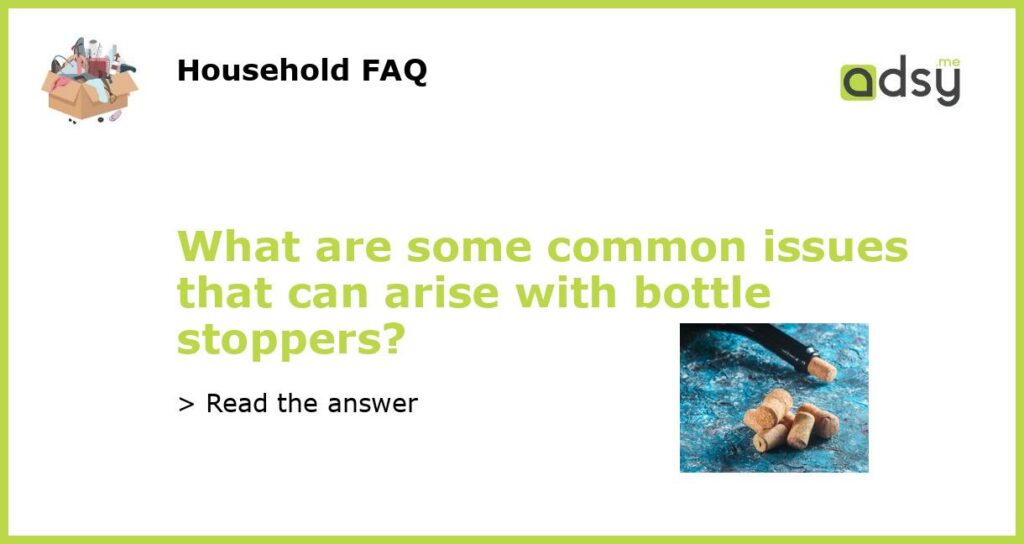5 Common Issues with Bottle Stoppers
Bottle stoppers are used to preserve the flavors and aromas of wine, vinegar, oil, or other liquids. They come in different materials and shapes but can sometimes present a few problems that affect their functionality and durability. Here are five common issues with bottle stoppers to watch out for:
Leakage
One of the most common issues with bottle stoppers is leakage. If the stopper doesn’t fit snugly into the bottle neck or if the material is too porous, air and moisture can seep in and spoil the liquid inside. This can also happen if the stopper is not inserted correctly or if it is clogged with debris or residue from previous use. To avoid leakage, choose a stopper that matches the size and shape of your bottle and is made of high-quality materials such as silicone, rubber, or cork.
Tainting
Another issue with bottle stoppers is tainting. Some materials such as plastic or metal can impart a smell or taste to the liquid, affecting its quality and purity. Tainting can also occur if the stopper hasn’t been cleaned properly and has bacteria or mold growing on it. To prevent tainting, use bottle stoppers made of food-grade materials that don’t react with the liquid or alter its properties. Clean the stopper after each use with warm water and soap or a mild disinfectant and let it air dry.
Breakage
Bottle stoppers can also break if they are made of brittle materials or if they are subjected to high pressure or impact. This can happen during shipment, storage, or handling. A broken stopper not only renders the liquid vulnerable to contamination and oxidation but also poses a safety risk. To avoid breakage, choose a stopper that is durable and resistant to shock and pressure, such as a stainless-steel or glass stopper.
Difficulty of use
Some bottle stoppers can be difficult to use, especially if they require excessive force or have a complicated mechanism. This can be inconvenient and frustrating, especially if you need to use the stopper frequently or have limited dexterity or grip. To make sure that the stopper is easy to use, test it before buying it and look for features such as a simple push-and-pull design, an ergonomic shape, or a non-slip surface.
Limited compatibility
Bottle stoppers may not be compatible with all types of liquids or bottles. For example, some stoppers are designed for wine bottles only and may not fit oil or vinegar bottles. Similarly, some liquids may require a stopper that allows for ventilation and prevents pressure buildup, while others need an airtight seal to avoid oxidation or spoilage. To ensure that the stopper is compatible with your liquid and bottle, read the product description carefully and check the material, size, and shape before buying it.






